|
||||||||||||||||||||||
![Home - Air Power Australia Website [Click for more ...]](APA/APA-Title-Main.png) |
||||||||||||||||||||||
![Sukhoi PAK-FA and Flanker Index Page [Click for more ...]](APA/flanker.png) |
![F-35 Joint Strike Fighter Index Page [Click for more ...]](APA/jsf.png) |
![Weapons Technology Index Page [Click for more ...]](APA/weps.png) |
![News and Media Related Material Index Page [Click for more ...]](APA/media.png) |
|||||||||||||||||||
![Surface to Air Missile Systems / Integrated Air Defence Systems Index Page [Click for more ...]](APA/sams-iads.png) |
![Ballistic Missiles and Missile Defence Page [Click for more ...]](APA/msls-bmd.png) |
![Air Power and National Military Strategy Index Page [Click for more ...]](APA/strategy.png) |
![Military Aviation Historical Topics Index Page [Click for more ...]](APA/history.png)
|
![Intelligence, Surveillance and Reconnaissance and Network Centric Warfare Index Page [Click for more ...]](APA/isr-ncw.png) |
![Information Warfare / Operations and Electronic Warfare Index Page [Click for more ...]](APA/iw.png) |
![Systems and Basic Technology Index Page [Click for more ...]](APA/technology.png) |
![Related Links Index Page [Click for more ...]](APA/links.png) |
|||||||||||||||
![Homepage of Australia's First Online Journal Covering Air Power Issues (ISSN 1832-2433) [Click for more ...]](APA/apa-analyses.png) |
||||||||||||||||||||||
| Last Updated: Mon Jan 27 11:18:09 UTC 2014 | ||||||||||||||||||||||
|
||||||||||||||||||||||
Almaz S-75 Dvina/Desna/VolkhovAir Defence System / HQ-2A/B / CSA-1 / SA-2 GuidelineЗенитный Ракетный Комплекс С-75 Двина/Десна/ВолховTechnical Report APA-TR-2009-0702 |
||||||||||||||||||||||||||||||||||||||||||||||||||||||||||||||||||||||||||||||||||||||||||||||||||||||||||||||||||||||||||||||||||||||||||||||||||||||||||||||||||||||||||||||||||||||||||||||||||||||||||||||||||||||||||||||||||||||||||||||||||||||||||||||||||||||||||||||||||||||||||||||||||||||||||||
| by
Dr
Carlo
Kopp, AFAIAA, SMIEEE, PEng July 2009 Updated April, 2012 Text, Line Art © 2009 - 2012 Carlo Kopp |
||||||||||||||||||||||||||||||||||||||||||||||||||||||||||||||||||||||||||||||||||||||||||||||||||||||||||||||||||||||||||||||||||||||||||||||||||||||||||||||||||||||||||||||||||||||||||||||||||||||||||||||||||||||||||||||||||||||||||||||||||||||||||||||||||||||||||||||||||||||||||||||||||||||||||||
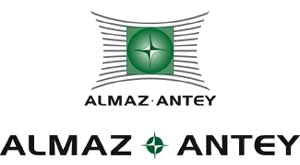 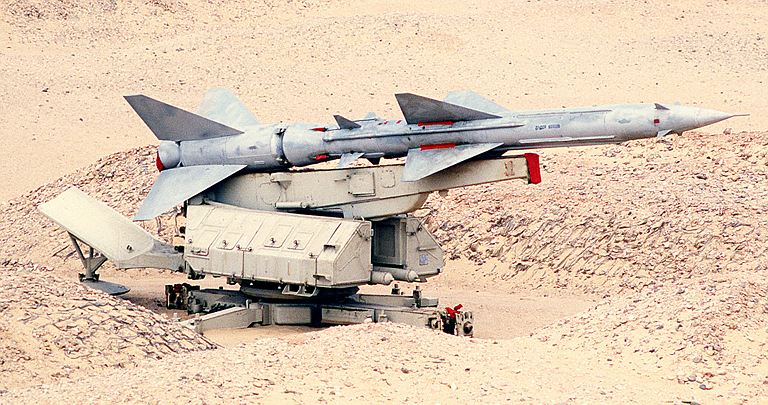 The S-75 / SA-2 Guideline was the first SAM to be used in anger, en masse, and changed the character of air warfare forever. Depicted Soviet supplied S-75 / SA-2 Guideline and SM-90 launcher operated by Egypt in 1985 (US DoD) |
||||||||||||||||||||||||||||||||||||||||||||||||||||||||||||||||||||||||||||||||||||||||||||||||||||||||||||||||||||||||||||||||||||||||||||||||||||||||||||||||||||||||||||||||||||||||||||||||||||||||||||||||||||||||||||||||||||||||||||||||||||||||||||||||||||||||||||||||||||||||||||||||||||||||||||
IntroductionThe S-75 / SA-2 Guideline
family of SAM systems remains the most widely exported area defence
missile system, and was supplied in large numbers by the Soviets to
Warsaw Pact nations, Third World Soviet allies and other non-aligned
nations. Over thirty nations deployed one or another variant of the
SA-2, and China manufactured indigenous derivatives well after this
design was out of production in the Soviet Union.
The basic design qualifies as semi-mobile, requiring several hours to set up or redeploy a battery. Typical battery composition is a single SNR-75 Fan Song series engagement radar, six SM-90 single rail launchers, and multiple PR-11AM transporter/transloader trucks carrying reload rounds for the SM-90s. Many S-75 operators deploy the system in fixed sites, with revetments using concreted pads and bays, and/or earthwork berms, to protect the missile system components. The PLA reverse engineered the Soviet V-75/S-75 Dvina / SA-2 Guideline SAM system during the 1960s, including the SNR-75 Fan Song radar, the SM-90 launcher and the PR-11AM transporter/transloader. Since then the PLA developed a significantly improved HQ-2B variant. RSNA-75/SNR-75 Fan Song Engagement RadarThe Fan Song is the engagement
radar for the S-75/SA-2 family of SAMs. First deployed in strength
during the Vietnam conflict, and later used extensively in the Middle
East and Africa, the SA-2 was the first Soviet SAM to be used in anger
and accounted for large numbers of Western aircraft until electronic
countermeasures were developed. The system was cloned by PLA and still
remains widely in use, even though Russia has replaced it with the
SA-10/20 system.
The are at least six known variants, one of which is a PLA clone. Details of PLA modifications to the design are not public knowledge. There are sufficient differences in the PLA designs to regard these as unique derivatives. The antenna configuration of the PLA variants generally follow the Fan Song A arrangement. The SNR-75 family of radars employ, by modern standards, a complex antenna arrangement which is employed to effect range and angle tracking of the intended target, and of the transponder beacon in the tail of the missile round. The proximity fused missile round is “dumb” in the sense that it is a pure command link design, which is flown to a collision with the target using a command uplink embedded in the SNR-75 radar. A more detailed discussion can be found under Engagement and Fire Control Radars. 
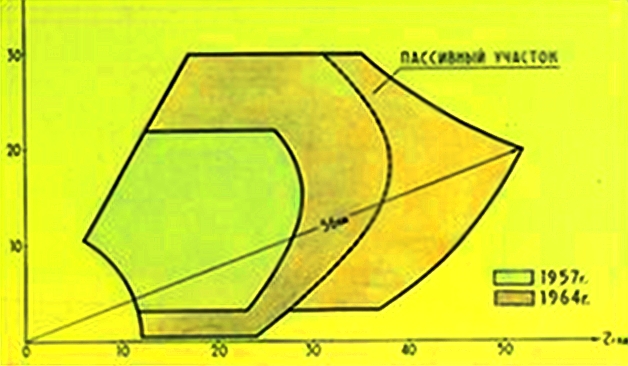 S-75 / SA-2 Guideline engagement envelope (Almaz image).  Early model 1D SA-2 Guideline missile (Almaz image via http://peters-ada.de/). 1D/13D/DM/DA/DAM/20D/DP/DSU/5Ya23/15D Surface to Air MissilesThe configuration of the 1D
through 5Ya23 missiles is a direct evolution of the earlier SA-25/S-25
/ SA-1 Guild, itself evolved from the 1944 German Wasserfall design.
Unlike its predecessors, the S-75 / SA-2 family of missiles were two
stage designs, using a solid rocket first stage booster for launch and
a variable thrust liquid propellant motor sustainer. Midbody cruciform
wings were employed to improve range and turning ability, with canard
and tail winglets for pitch, roll and yaw control and stability. By modern standards, the missile
design is unusually simple, with most of the complexity in the liquid
propellant sustainer and fuel system. The choice of this sustainer for
two reasons, the first being immaturity of high impulse solid
propellants, the second being in the ability to modulate thrust through
the flight profile. An important consideration is the
Soviet philosophy of making the missile round as simple and cheap as
possible, and putting the cost and complexity into the engagement
radar. The operational economics of this model were to minimise the
cost of the expendable component of the weapon system. The nose of the missile houses
the radio proximity fuse. In early variants this was the 5E11 Shmel
series, the later Ovod variant, and then the 5E29. Early variants used
separate linear transmit and receive antennas flush with the skin of
the missile, later variants used a characteristic dielectric band
radome. Later variants included programmable ECCM modes, such as
alternating emissions between the two hemispheres of antenna coverage. Immediately aft of the fuse is
the V-88 series blast fragmentation warhead, which weighs between 190
kg and 250 kg, depending on missile variant. The large warhead size was
intended to produce a large lethal envelope, to offset the accuracy
limitations of the command link guidance and proximity fusing. Warhead
performance evolved over the life of the missile, the early 11D round
producing 8,000 fragments, the 20D 32,000 fragments and the very late
5Ya23 29,000 fragments. Initial fragment velocity was 2,500 m/s. The
timing of the proximity fuse trigger point was programmable via the
command uplink, with shorter delays for closing versus receding
targets. Lethal radius was nominally 60 metres (~400 ft lethal
diameter). Much of the missile's internal
volume is occupied with propellant tanks for the sustainer engine. The 43 kg dry weight Isayev S2.711 (S5.711) liquid propellant powerplant burns a hypergolic propellant mix. The oxidiser is either AK-20F or AK-20K fuming nitric acid melange depending on the motor variant, comprising ~80% nitric acid and ~20% N2O4 with an inhibitor additive. The fuel is TG-02, comprising 50% isomeric xylidine, 48.5% triethylamine and 1.5% diethylamine, this propellant mix was essentially an evolution of the 1944 Wasserfall fuel. The S2.711 used in early variants produced a thrust rating between 2,650 and 3,000 kp (5,800 lbf and 6,600 lbf), the later S2.720 used in the 20D round produced between 2,075 kp and 3,500 kp (4,580 lbf and 7,700 lbf) thrust using a different propellant mix. Specific impulse for the S2.711 was 224 up to 252.7 kp.sec/kg. The turbopump for the engine
was fuelled by a tank of OT-155 Isonite
(isopropyl nitrate). The propellant payload permitted a burn duration
between 25 and 60 seconds, subject to thrust profile. All propellant
tanks were pressurised from a compressed air tank.
This fuel system arrangement as used in the earlier 1D through 11D variants was supplanted in the 20D and later missile rounds. The later variants used the AK-27I oxidiser, comprising ~73% nitric acid, ~27% N2O4 and an inhibitor additive. The fuel was TM185 comprising 56% Kerosene and 40% Trikresol. As this fuel did not ignite spontaneously, an additional tank of TG-02 “starter fuel” was employed to ignite the rocket. The later propellant mix was more energetic and provided better storage life, with the TM185 fuel being less toxic, and the primary propellant components safer to fuel and defuel. The first stage which was used to accelerate the missile at launch used a PRD-18 solid rocket powerplant with 2-4 sec burn duration. This design used 14 tubes of NMF-2 propellant and a variable cross section throat. The missile guidance system is relatively simple, comprising an autopilot and a command link receiver, with a missile beacon in the tail to facilitate tracking by the Fan Song radar. The command link channel produced four distinct pulse modulated waveforms. The K1 and K2 waveforms carried climb/dive and left/right turn commands, the K3 waveform arms the radio proximity fuse, and the K4 waveform is used to program the proximity fuse delay depending on missile engagement geometry. In operation, the Fan Song radar would track the target and continuously compute an optimal missile trajectory for intercept, while tracking the missile via its transponder beacon. The uplink would then be used to continuously drive the missile flightpath as close as possible to the intended trajectory, in a closed loop scheme. Two control laws were employed, the
“Treokh Tochek (TT - three
point)” and “Polavinoye Spravleniye
(PS - half correction)” techniques.
The TT control law is essentially a Soviet implementation of Command to Line of Sight (CLOS), where the missile flightpath is continously adjusted so that it follows the line of sight between the radar and the target. While this technique does attempt to minimise flightpath length, it does not maximise missile range per propellant payload, and tends to subject the missile, in some geometries, to large transverse accelerations. The latter facilitated defeat of the missile by high G manoeuvres. The PS control law was more sophisticated and used against manoeuvring targets. An earth bias was often included in the control law when firing against low altitude targets, to preclude unwanted proximity fuse initiation, or inadvertent ground collision caused by autopilot inputs. The command link guidance scheme and need to carefully select control laws and radar modes resulted in a need for high levels of operator skill and a good understanding of engagement geometries. The combat effectiveness of the S-75 / SA-2 Guideline varied widely as a result, with Warsaw Pact instructors and their Vietnamese students typically performing much better in combat compared to their counterparts in the Middle East. Production and Exports
|
||||||||||||||||||||||||||||||||||||||||||||||||||||||||||||||||||||||||||||||||||||||||||||||||||||||||||||||||||||||||||||||||||||||||||||||||||||||||||||||||||||||||||||||||||||||||||||||||||||||||||||||||||||||||||||||||||||||||||||||||||||||||||||||||||||||||||||||||||||||||||||||||||||||||||||
S-75 Technical Data
|
||||||||||||||||||||||||||||||||||||||||||||||||||||||||||||||||||||||||||||||||||||||||||||||||||||||||||||||||||||||||||||||||||||||||||||||||||||||||||||||||||||||||||||||||||||||||||||||||||||||||||||||||||||||||||||||||||||||||||||||||||||||||||||||||||||||||||||||||||||||||||||||||||||||||||||
S-75 Battery Components |
||||||||||||||||||||||||||||||||||||||||||||||||||||||||||||||||||||||||||||||||||||||||||||||||||||||||||||||||||||||||||||||||||||||||||||||||||||||||||||||||||||||||||||||||||||||||||||||||||||||||||||||||||||||||||||||||||||||||||||||||||||||||||||||||||||||||||||||||||||||||||||||||||||||||||||
|
||||||||||||||||||||||||||||||||||||||||||||||||||||||||||||||||||||||||||||||||||||||||||||||||||||||||||||||||||||||||||||||||||||||||||||||||||||||||||||||||||||||||||||||||||||||||||||||||||||||||||||||||||||||||||||||||||||||||||||||||||||||||||||||||||||||||||||||||||||||||||||||||||||||||||||
S-75 Battery Deployment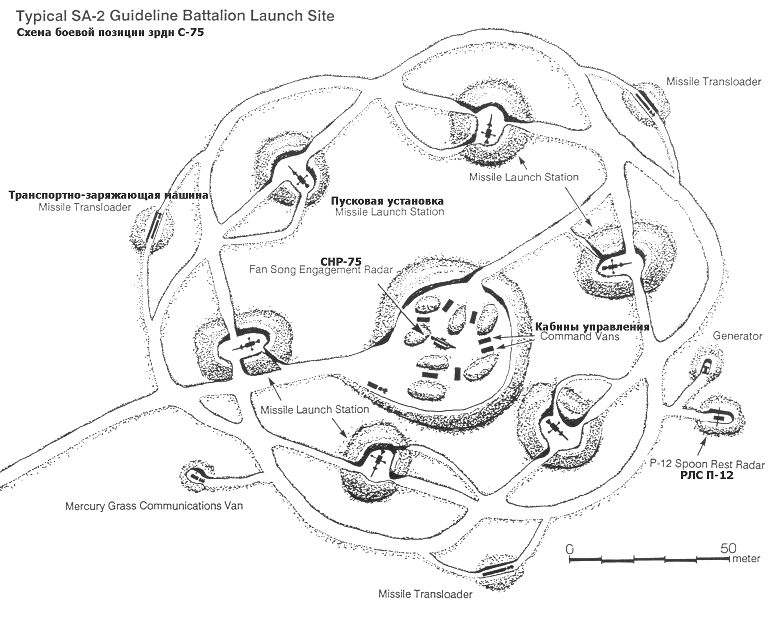 US
DoD
rendering
of fixed revetted SA-2 site circa 1966.
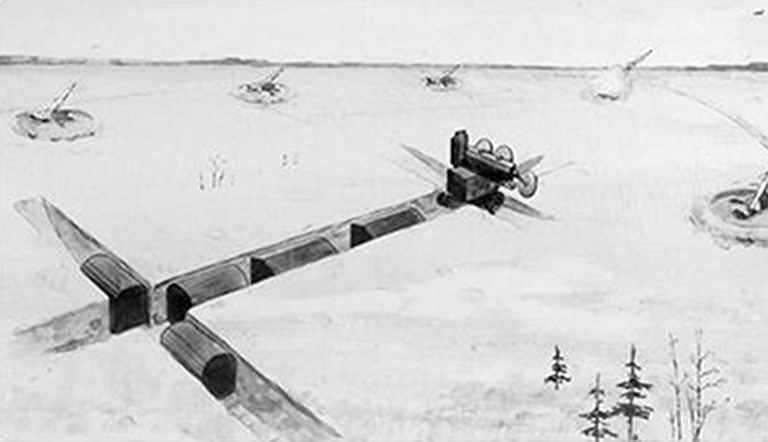 Russian
rendering of an SA-2 site with Fan Song E radar vans in
protected excavations (Almaz image).
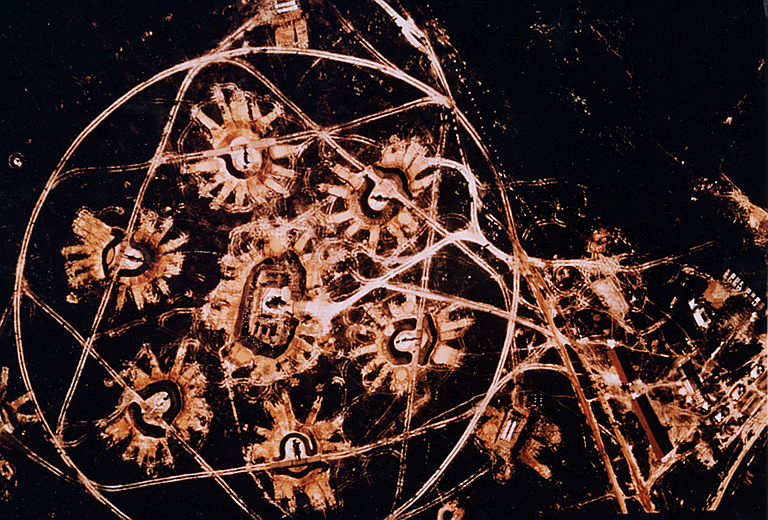 An S-75 / SA-2 SAM site photographed by a
US reconnaissance aircraft during the Cuban Missile Crisis (US Air
Force).
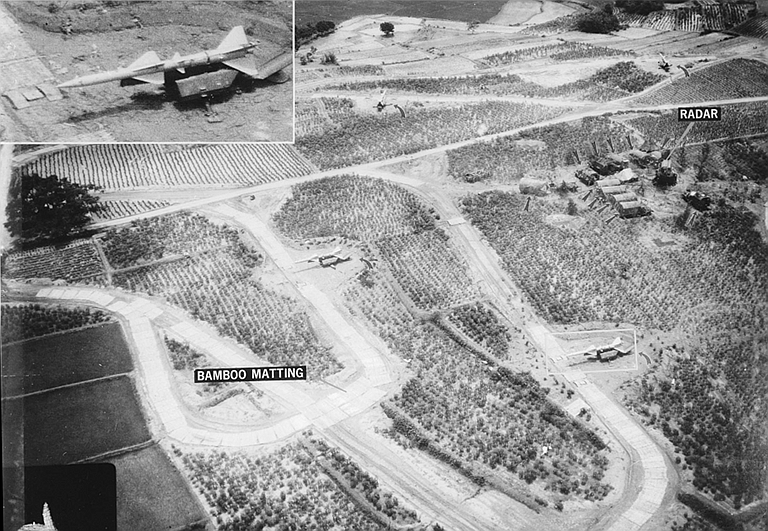 An operational S-75 / SA-2 SAM site
photographed from low altitude by a US reconnaissance aircraft early
during the Vietnam conflict. Note the large number of radar and
generator vans, reduced in later variants of the system (US Air Force).
|
||||||||||||||||||||||||||||||||||||||||||||||||||||||||||||||||||||||||||||||||||||||||||||||||||||||||||||||||||||||||||||||||||||||||||||||||||||||||||||||||||||||||||||||||||||||||||||||||||||||||||||||||||||||||||||||||||||||||||||||||||||||||||||||||||||||||||||||||||||||||||||||||||||||||||||
|
|
||||||||||||||||||||||||||||||||||||||||||||||||||||||||||||||||||||||||||||||||||||||||||||||||||||||||||||||||||||||||||||||||||||||||||||||||||||||||||||||||||||||||||||||||||||||||||||||||||||||||||||||||||||||||||||||||||||||||||||||||||||||||||||||||||||||||||||||||||||||||||||||||||||||||||||
SM-90 Launcher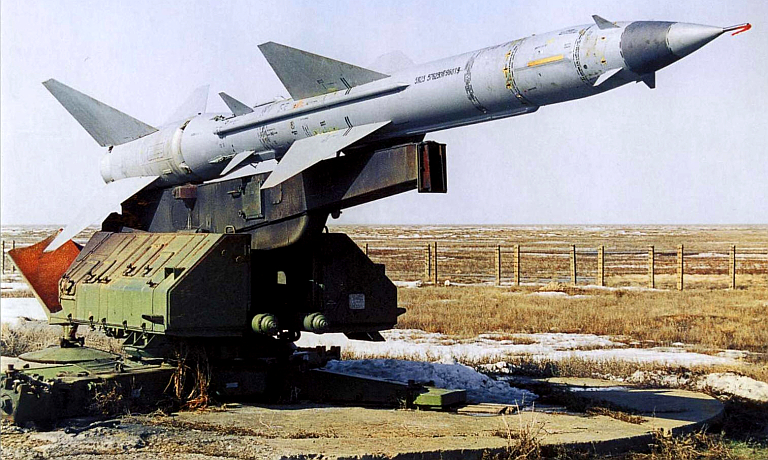 Late model 5Ya23 / SA-2D Guideline on
SM-90M launcher. Note the concrete pad (Almaz image via http://peters-ada.de/).
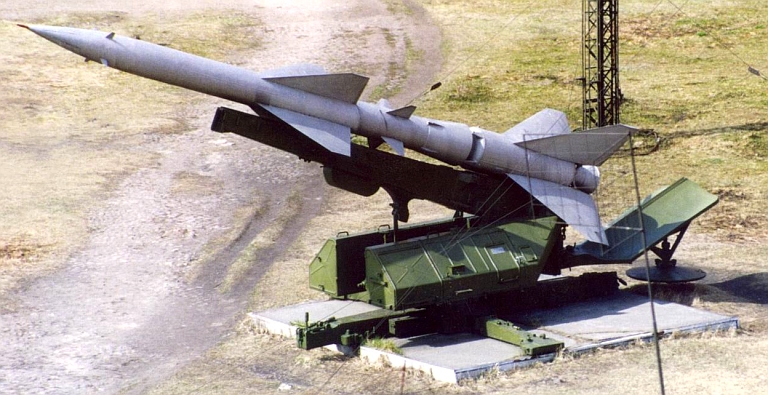 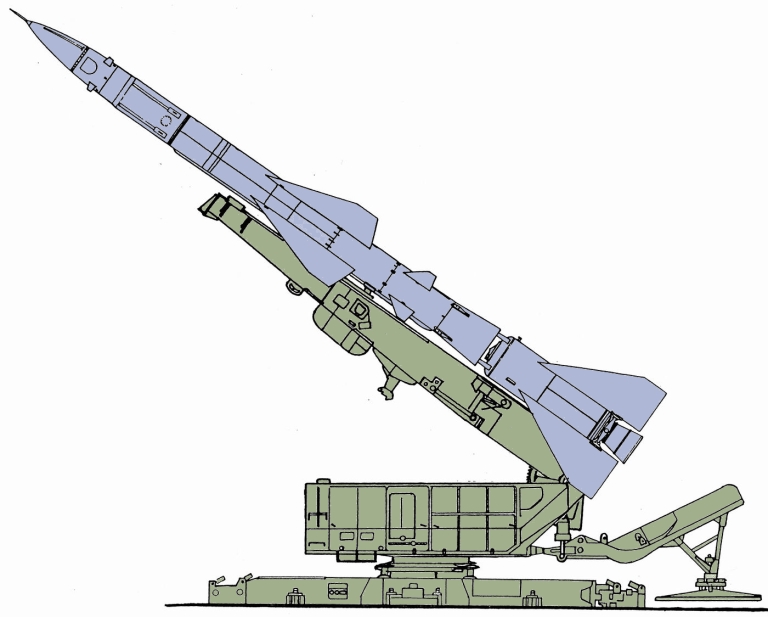 SM-90 Launcher elevated (via Vestnik PVO). 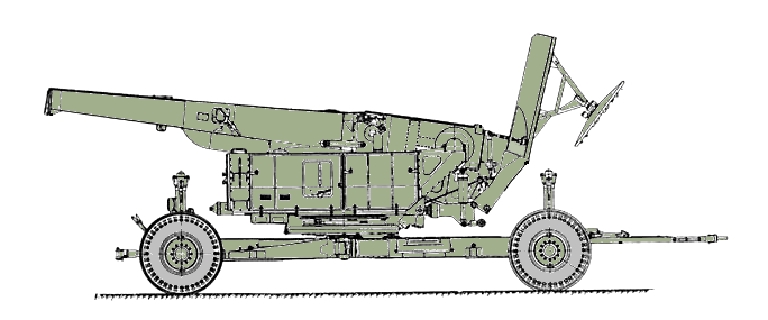 Stowed SM-90 configured for towing (image via http://peters-ada.de/). 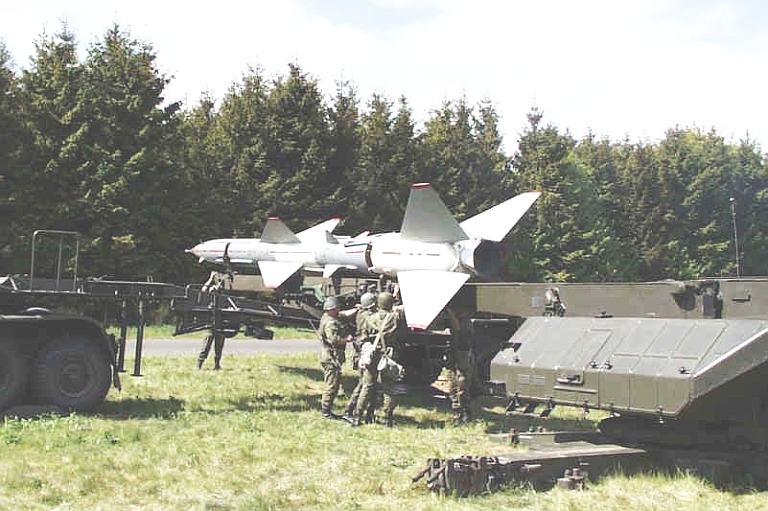 Loading the SM-90 from a PR-11AM transloader. |
||||||||||||||||||||||||||||||||||||||||||||||||||||||||||||||||||||||||||||||||||||||||||||||||||||||||||||||||||||||||||||||||||||||||||||||||||||||||||||||||||||||||||||||||||||||||||||||||||||||||||||||||||||||||||||||||||||||||||||||||||||||||||||||||||||||||||||||||||||||||||||||||||||||||||||
PR-11A/AM Towed Transporter/Transloader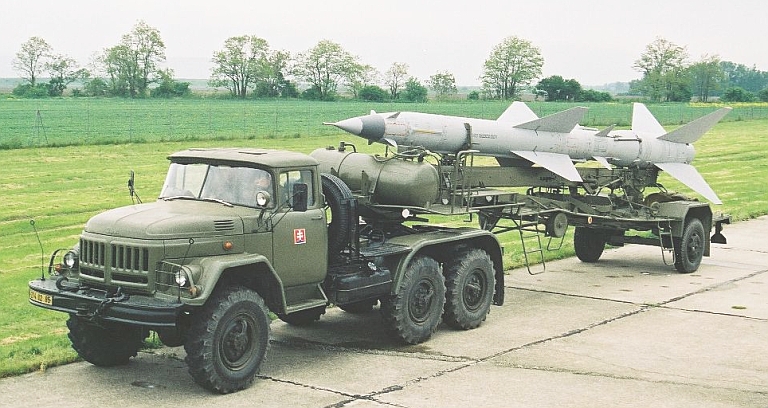 PR-11A transloader and late model
V-759/5Ya23
round of the Slovakian Army
(Image
© Miroslav
Gyűrösi).
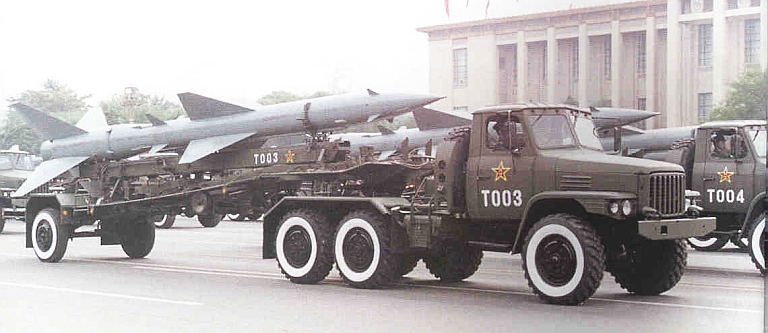 Reverse engineered PLA PR-11AM transporter/transloader, with a late model tractor. 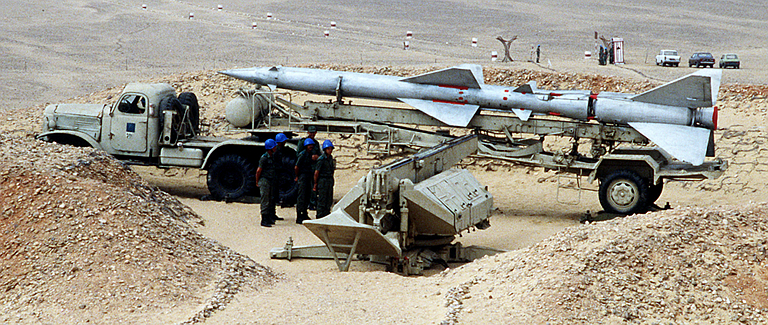 A Soviet supplied S-75 Guideline and early
model PR-11AM transporter/transloader,
operated by Egypt in
1985 (US DoD).
|
||||||||||||||||||||||||||||||||||||||||||||||||||||||||||||||||||||||||||||||||||||||||||||||||||||||||||||||||||||||||||||||||||||||||||||||||||||||||||||||||||||||||||||||||||||||||||||||||||||||||||||||||||||||||||||||||||||||||||||||||||||||||||||||||||||||||||||||||||||||||||||||||||||||||||||
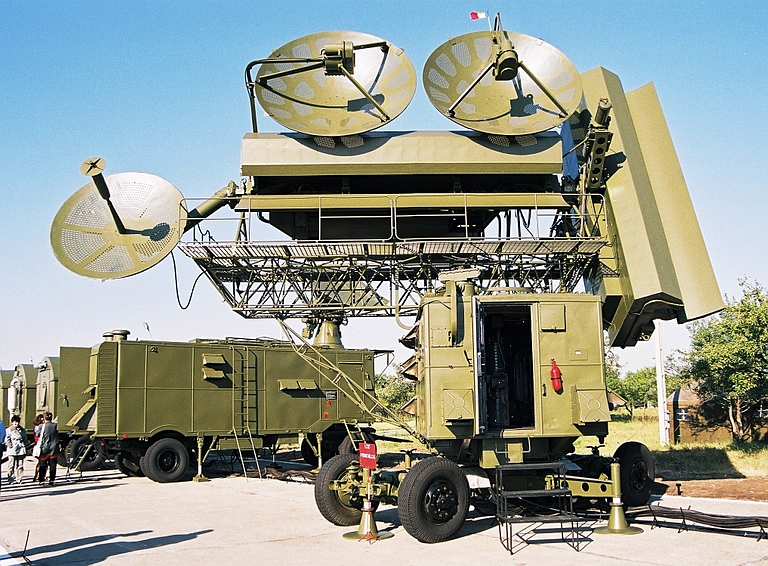 SNR-75M3
PV
van with
antenna head elevated at ~15° and rotated on the base turntable (Image
© Miroslav
Gyűrösi).
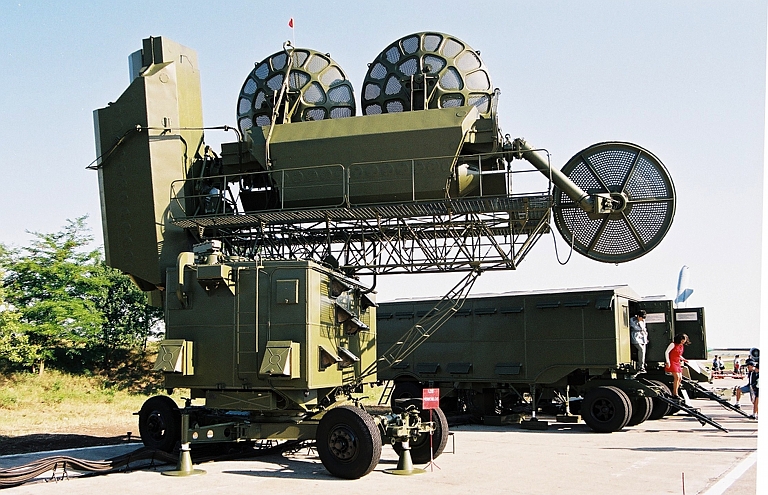 Aft view of PV van with antenna head levelled (Image © Miroslav Gyűrösi). 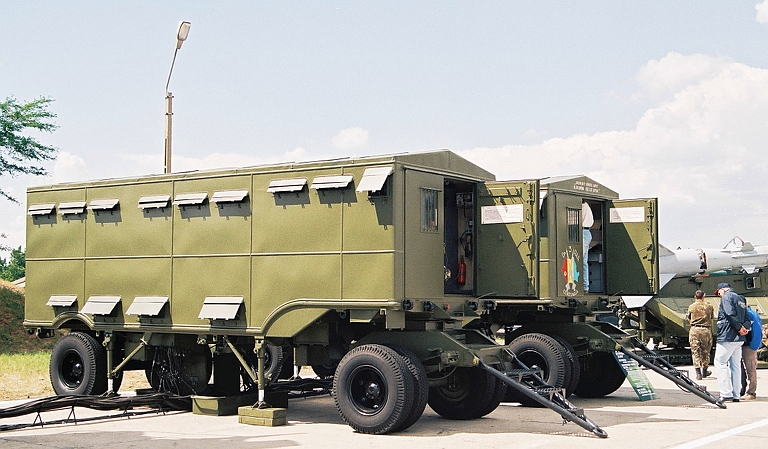 SNR-75M3 UV
and AV vans - these contain the operator stations and system
electronics respectively
(Image
© Miroslav
Gyűrösi).
|
||||||||||||||||||||||||||||||||||||||||||||||||||||||||||||||||||||||||||||||||||||||||||||||||||||||||||||||||||||||||||||||||||||||||||||||||||||||||||||||||||||||||||||||||||||||||||||||||||||||||||||||||||||||||||||||||||||||||||||||||||||||||||||||||||||||||||||||||||||||||||||||||||||||||||||
NITEL P-18-2/P-18M Spoon Rest D/E Acquisition Radar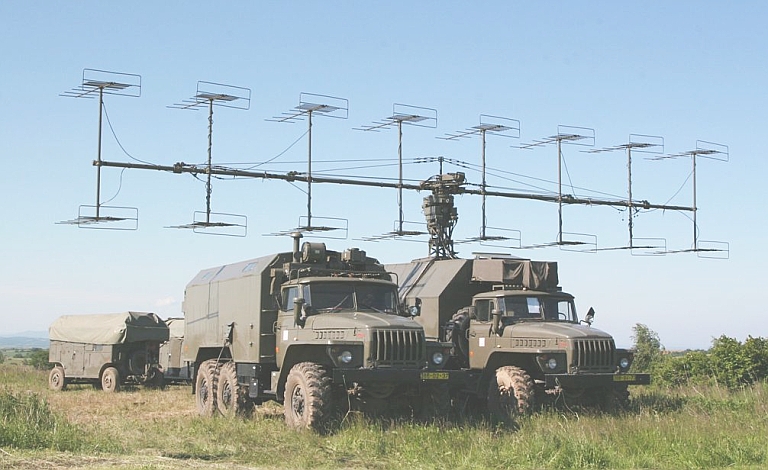 |
||||||||||||||||||||||||||||||||||||||||||||||||||||||||||||||||||||||||||||||||||||||||||||||||||||||||||||||||||||||||||||||||||||||||||||||||||||||||||||||||||||||||||||||||||||||||||||||||||||||||||||||||||||||||||||||||||||||||||||||||||||||||||||||||||||||||||||||||||||||||||||||||||||||||||||
PRV-10 Konus / PRV-11 Vershina / Side Net Heightfinding Radars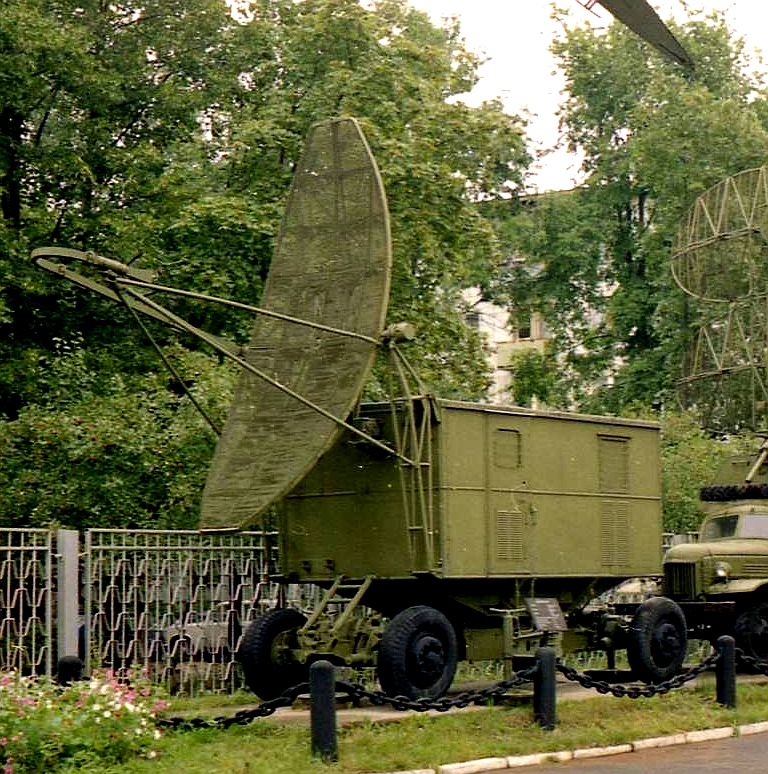 Early model PRV-10 heightfinder (Vestnik PVO image). |
||||||||||||||||||||||||||||||||||||||||||||||||||||||||||||||||||||||||||||||||||||||||||||||||||||||||||||||||||||||||||||||||||||||||||||||||||||||||||||||||||||||||||||||||||||||||||||||||||||||||||||||||||||||||||||||||||||||||||||||||||||||||||||||||||||||||||||||||||||||||||||||||||||||||||||
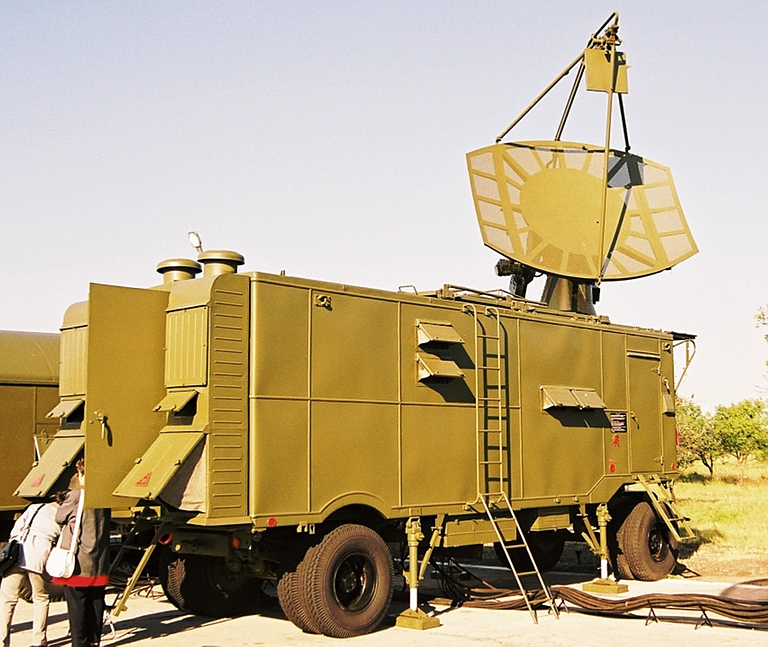 The RD-75 Amazonka was a
rangefinding radar incorporated often in late model S-75 / SA-2
Guideline missile batteries. It was slaved in azimuth and elevation to
the boresight of the SNR-75M3 Fan Song and was employed to perform
precision rangefinding when the rangefinding channel in the Fan Song
was degraded or compromised by jamming. (Image
© Miroslav
Gyűrösi).
|
||||||||||||||||||||||||||||||||||||||||||||||||||||||||||||||||||||||||||||||||||||||||||||||||||||||||||||||||||||||||||||||||||||||||||||||||||||||||||||||||||||||||||||||||||||||||||||||||||||||||||||||||||||||||||||||||||||||||||||||||||||||||||||||||||||||||||||||||||||||||||||||||||||||||||||
S-75 / SA-2 Guideline Combat Imagery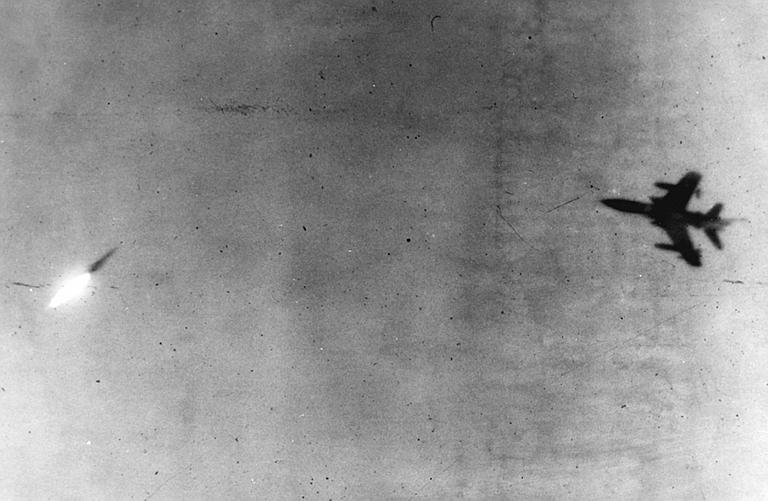 US Air Force F-105D Thunderchief evading
an SA-2 missile over North Vietnam (US Air Force image).
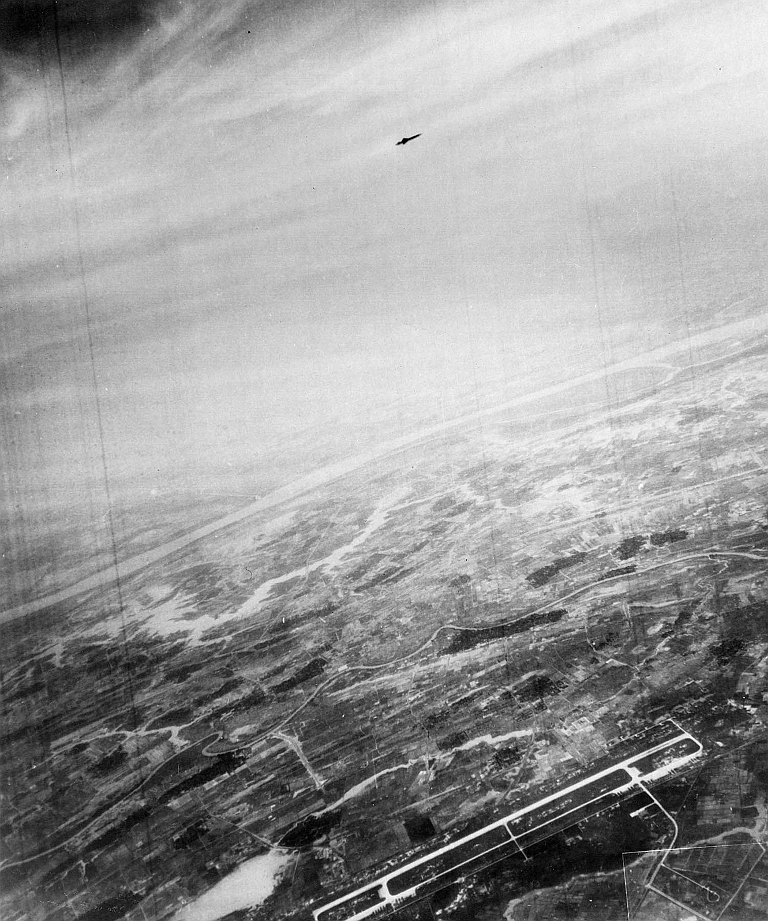 SA-2
missile
in flight over the NVAF airfield at Kep (US Air Force image).
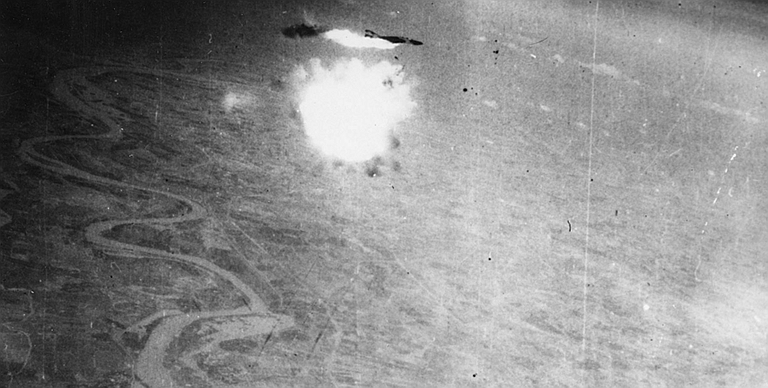 Above, proximity fused SA-2 round explodes
beneath a US Air Force RF-4C Phantom flown by Capts. Edwin Atterberry
and Thomas Parrott near Hanoi, 12th August, 1967. Below, the RF-4C
breaks up as a result of fatal structural damage. Both crew survived
the ejection, but Capt Atterberry was later killed in captivity by the
PAVN (US Air
Force image).
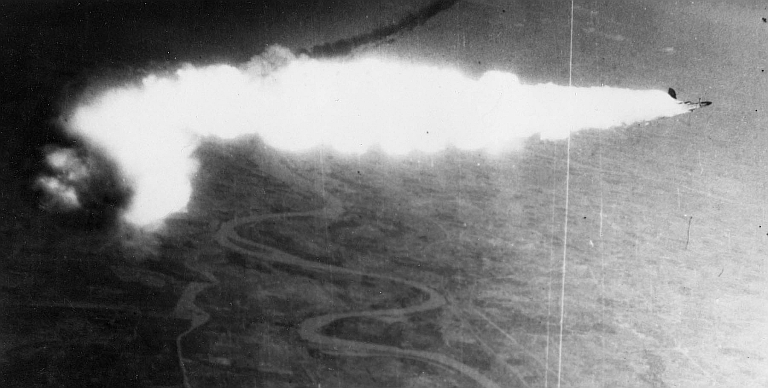 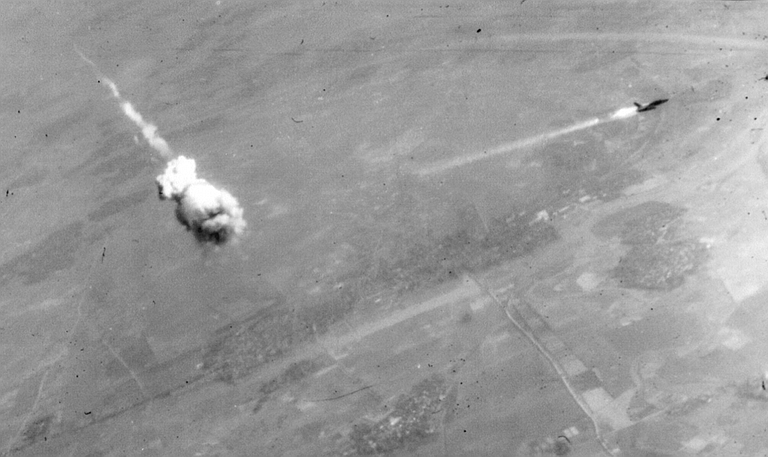 A damaged F-105D after a near miss by a proximity fused SA-2 round (US Air Force image). 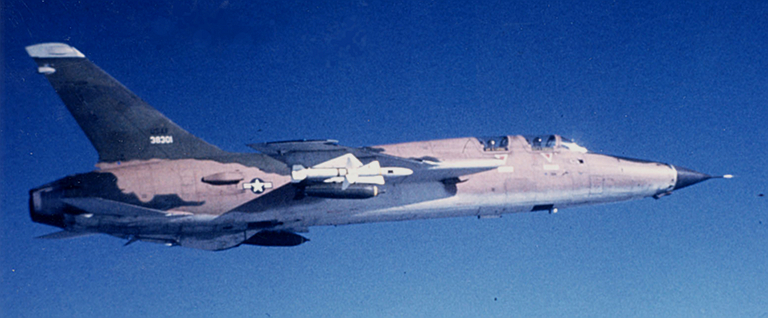 The lethality of the SA-2 was so high that
it forced the development of specialised aircraft and systems to hunt
it. Above, the F-105F Wild Weasel, below the F-105G (US Air Force images).
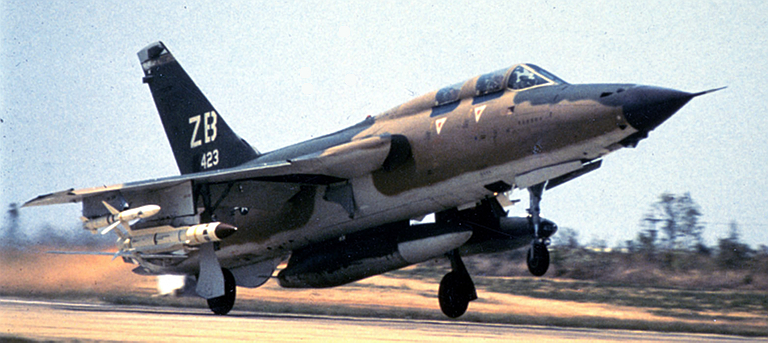 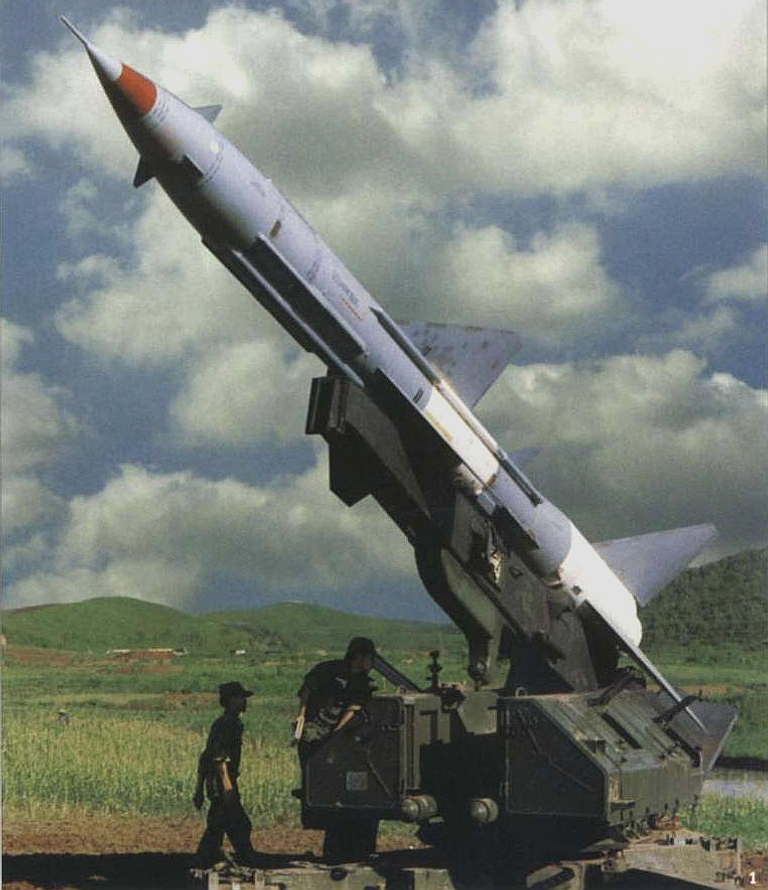 |
||||||||||||||||||||||||||||||||||||||||||||||||||||||||||||||||||||||||||||||||||||||||||||||||||||||||||||||||||||||||||||||||||||||||||||||||||||||||||||||||||||||||||||||||||||||||||||||||||||||||||||||||||||||||||||||||||||||||||||||||||||||||||||||||||||||||||||||||||||||||||||||||||||||||||||
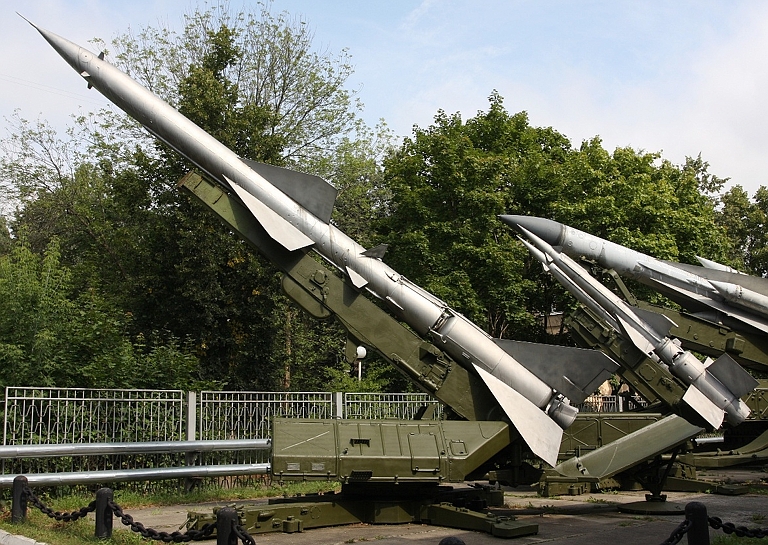 The
SA-75
Desna system SM-63
launcher used to fire the 13D missile, which downed Gary Powers'
U-2, is on display at the Zvezda Air Defence Museum in Russia (image © Miroslav
Gyűrösi).
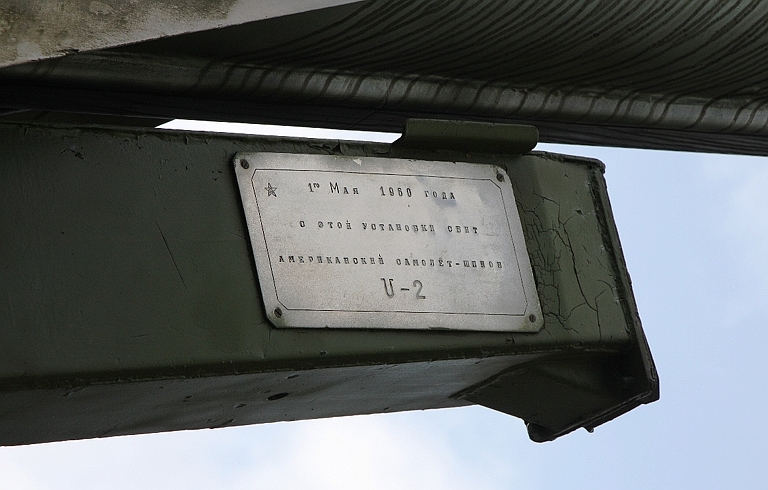 |
||||||||||||||||||||||||||||||||||||||||||||||||||||||||||||||||||||||||||||||||||||||||||||||||||||||||||||||||||||||||||||||||||||||||||||||||||||||||||||||||||||||||||||||||||||||||||||||||||||||||||||||||||||||||||||||||||||||||||||||||||||||||||||||||||||||||||||||||||||||||||||||||||||||||||||
References/Sources
|
||||||||||||||||||||||||||||||||||||||||||||||||||||||||||||||||||||||||||||||||||||||||||||||||||||||||||||||||||||||||||||||||||||||||||||||||||||||||||||||||||||||||||||||||||||||||||||||||||||||||||||||||||||||||||||||||||||||||||||||||||||||||||||||||||||||||||||||||||||||||||||||||||||||||||||
| Technical
Report APA-TR-2009-0702 |
||||||||||||||||||||||||||||||||||||||||||||||||||||||||||||||||||||||||||||||||||||||||||||||||||||||||||||||||||||||||||||||||||||||||||||||||||||||||||||||||||||||||||||||||||||||||||||||||||||||||||||||||||||||||||||||||||||||||||||||||||||||||||||||||||||||||||||||||||||||||||||||||||||||||||||
|
|||||||||||||
![Sukhoi PAK-FA and Flanker Index Page [Click for more ...]](APA/flanker.png) |
![F-35 Joint Strike Fighter Index Page [Click for more ...]](APA/jsf.png) |
![Weapons Technology Index Page [Click for more ...]](APA/weps.png) |
![News and Media Related Material Index Page [Click for more ...]](APA/media.png) |
||||||||||
![Surface to Air Missile Systems / Integrated Air Defence Systems Index Page [Click for more ...]](APA/sams-iads.png) |
![Ballistic Missiles and Missile Defence Page [Click for more ...]](APA/msls-bmd.png) |
![Air Power and National Military Strategy Index Page [Click for more ...]](APA/strategy.png) |
![Military Aviation Historical Topics Index Page [Click for more ...]](APA/history.png)
|
![Information Warfare / Operations and Electronic Warfare Index Page [Click for more ...]](APA/iw.png) |
![Systems and Basic Technology Index Page [Click for more ...]](APA/technology.png) |
![Related Links Index Page [Click for more ...]](APA/links.png) |
|||||||
![Homepage of Australia's First Online Journal Covering Air Power Issues (ISSN 1832-2433) [Click for more ...]](APA/apa-analyses.png) |
|||||||||||||
| Artwork, graphic design, layout and text © 2004 - 2014 Carlo Kopp; Text © 2004 - 2014 Peter Goon; All rights reserved. Recommended browsers. Contact webmaster. Site navigation hints. Current hot topics. | |||||||||||||
|
Site Update
Status:
$Revision: 1.753 $
Site History: Notices
and
Updates / NLA Pandora Archive
|
|||||||||||||
|
|
Tweet | Follow @APA_Updates | |||||||||||
|
|
|||||||||||||
|
|
|||||||||||||
![F-111 Aardvark Index Page [Click for more ...]](APA/f-111.png)
![F/A-18 Hornet and Super Hornet Index Page [Click for more ...]](APA/fa-18a.png)
![Aerial Refuelling and Airlift Capabilities Index Page [Click for more ...]](APA/aar-lift.png)
![Directed Energy Weapons and Electromagnetic Bombs Index Page [Click for more ...]](APA/dew.png)
![Notices and Updates Index Page [Click for more ...]](APA/notices-128.png)
![APA NOTAM and Media Release Index Page [Click for more ...]](APA/notams-128.png)
![APA Research Activities and Policy / Technical Reports Index [Click for more ...]](APA/research-128.png)
![Search Air Power Australia Website [Click for more ...]](APA/search-128.png)
![Briefings and Submissions - Air Power Australia [Click for more ...]](APA/briefs-128.png)
![Air Power Australia Contacts [Click for more ...]](APA/contacts-128.png)
![Funding Air Power Australia [Click for more ...]](APA/funding-258.png)